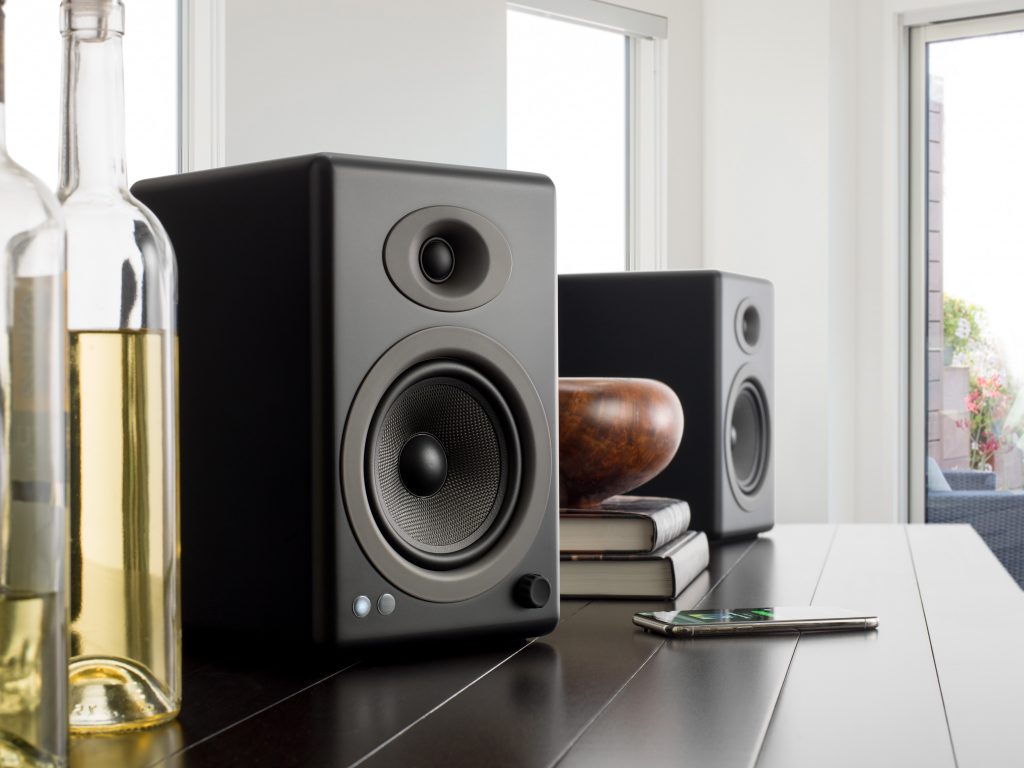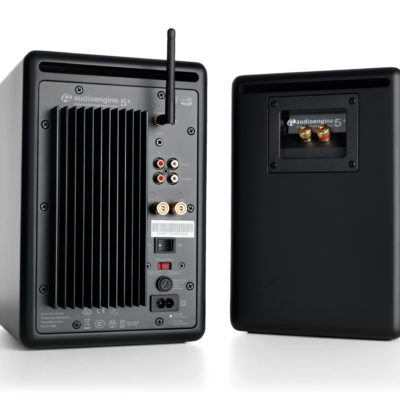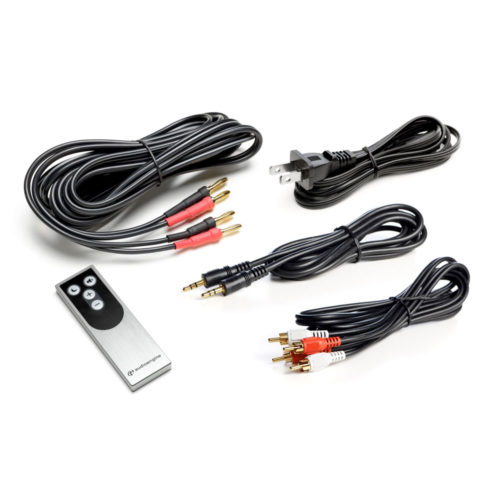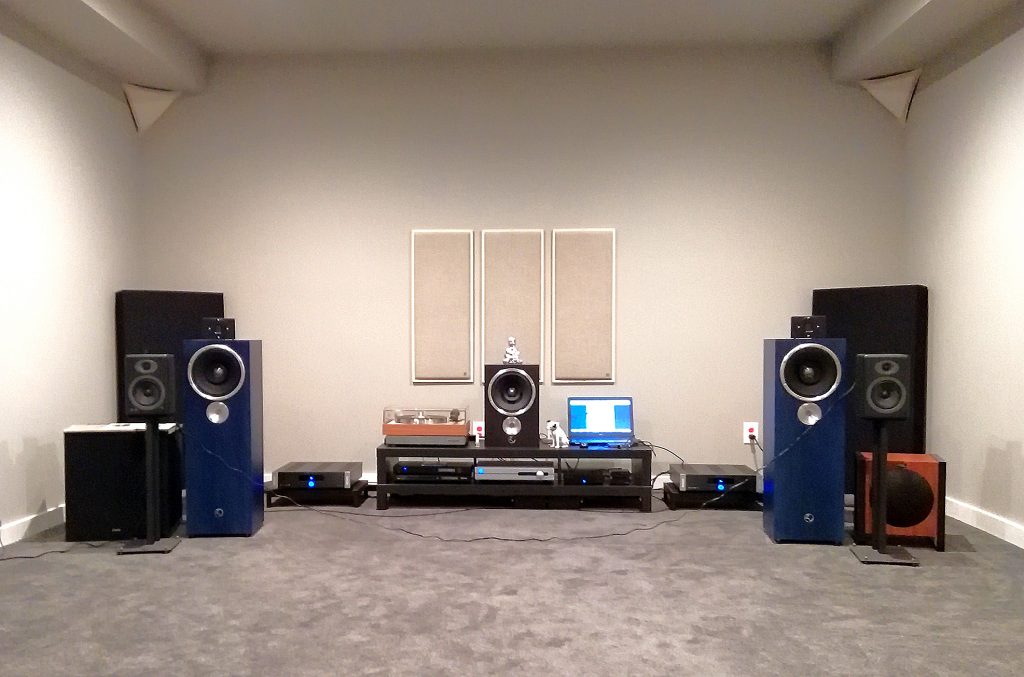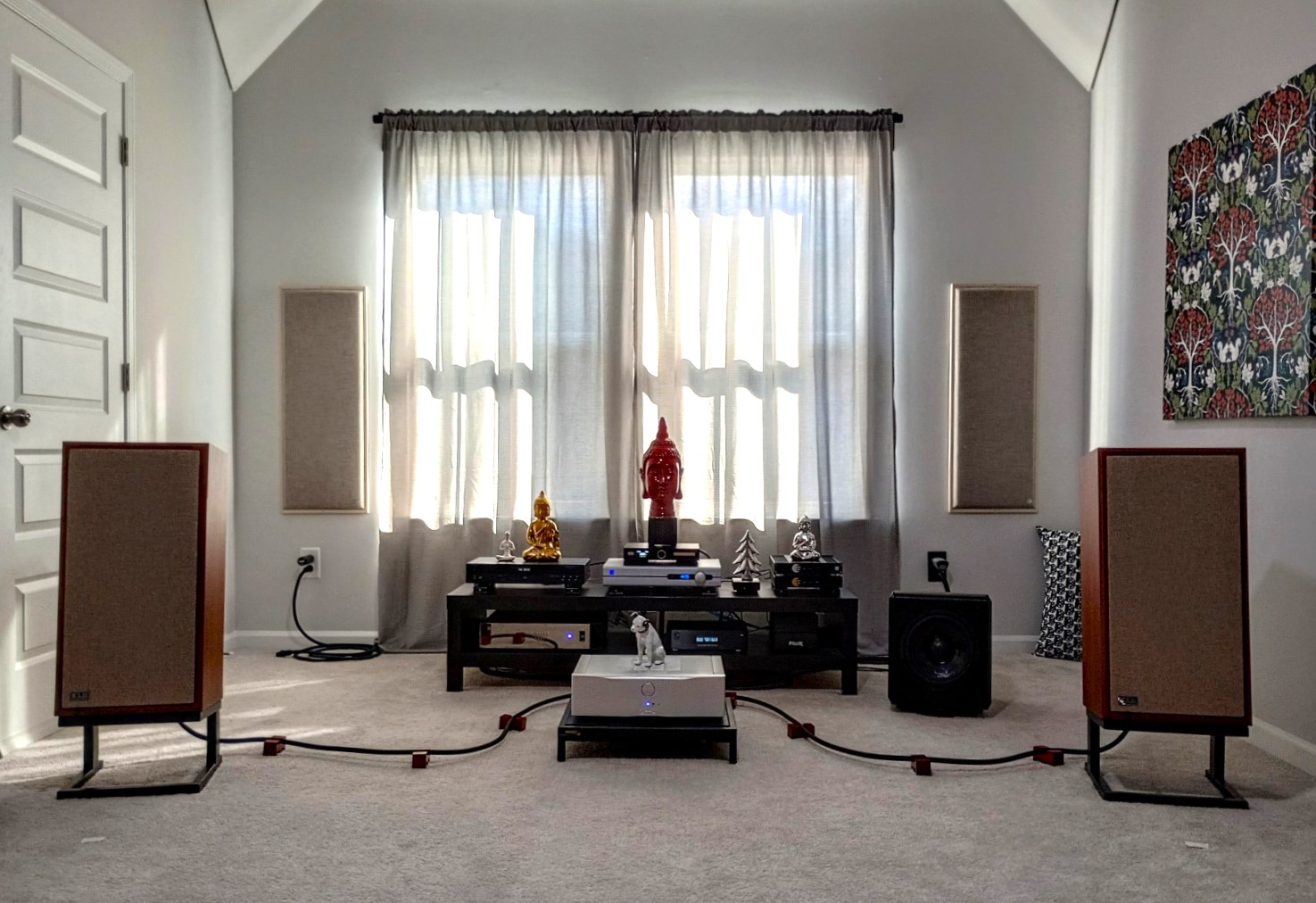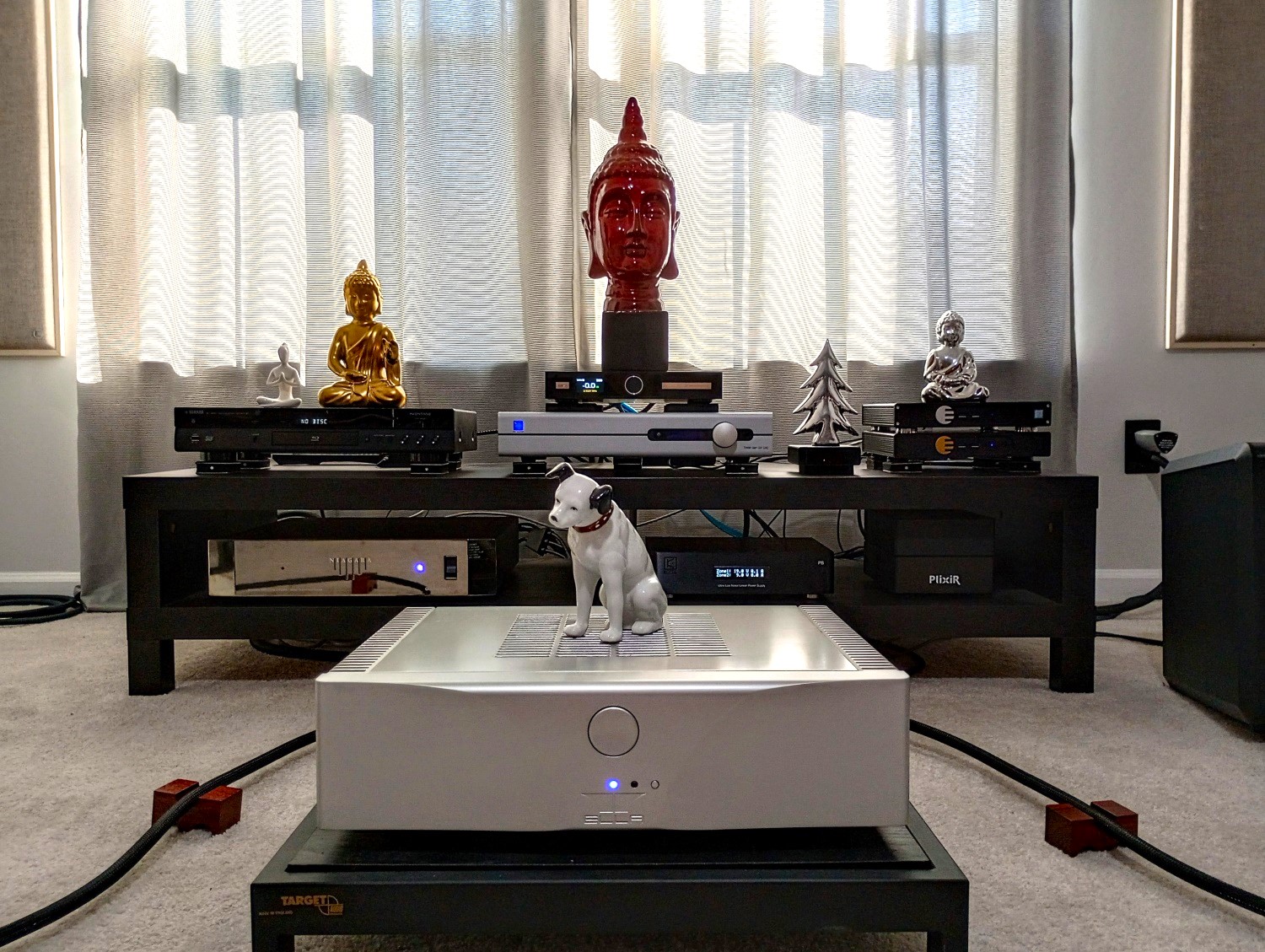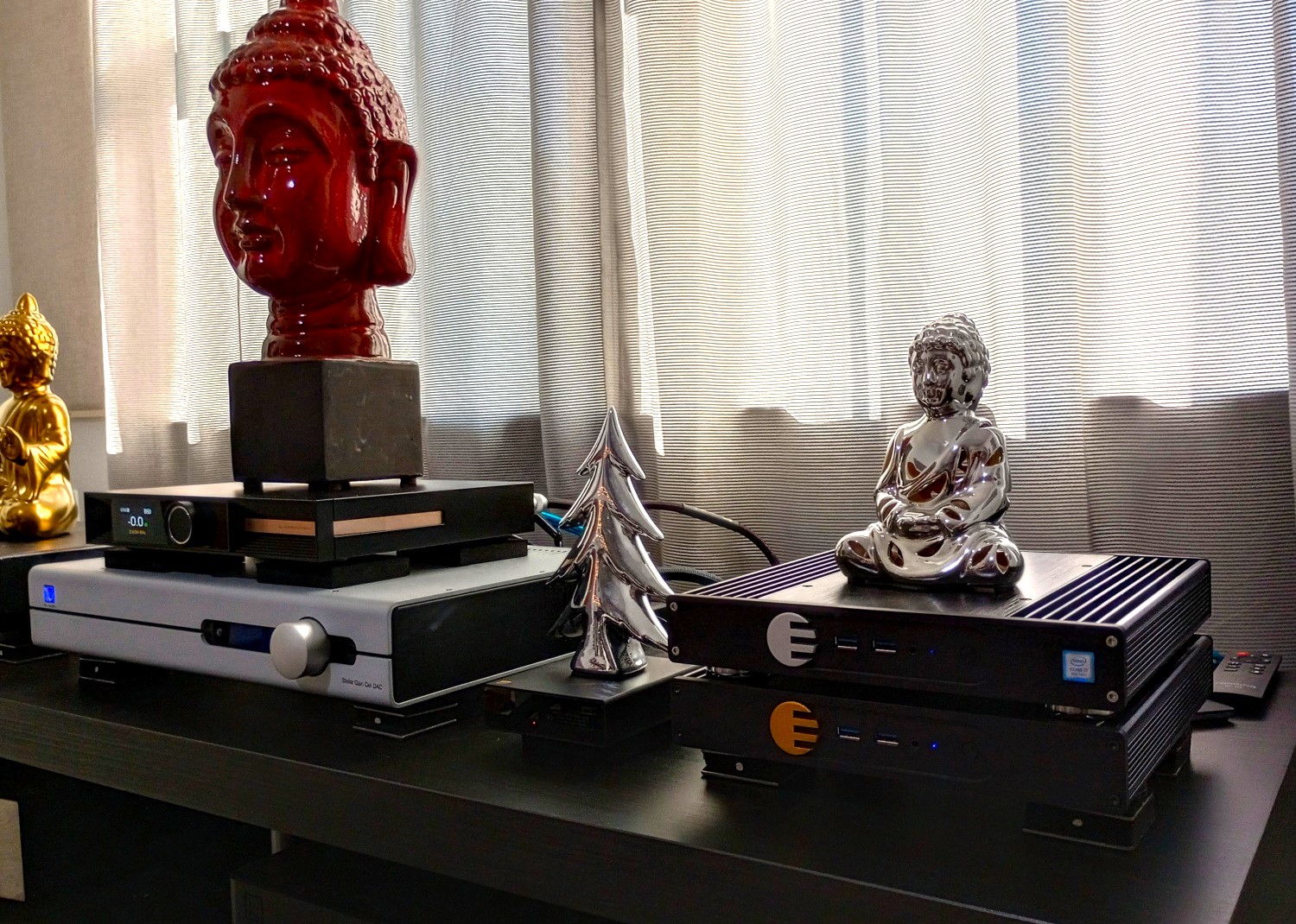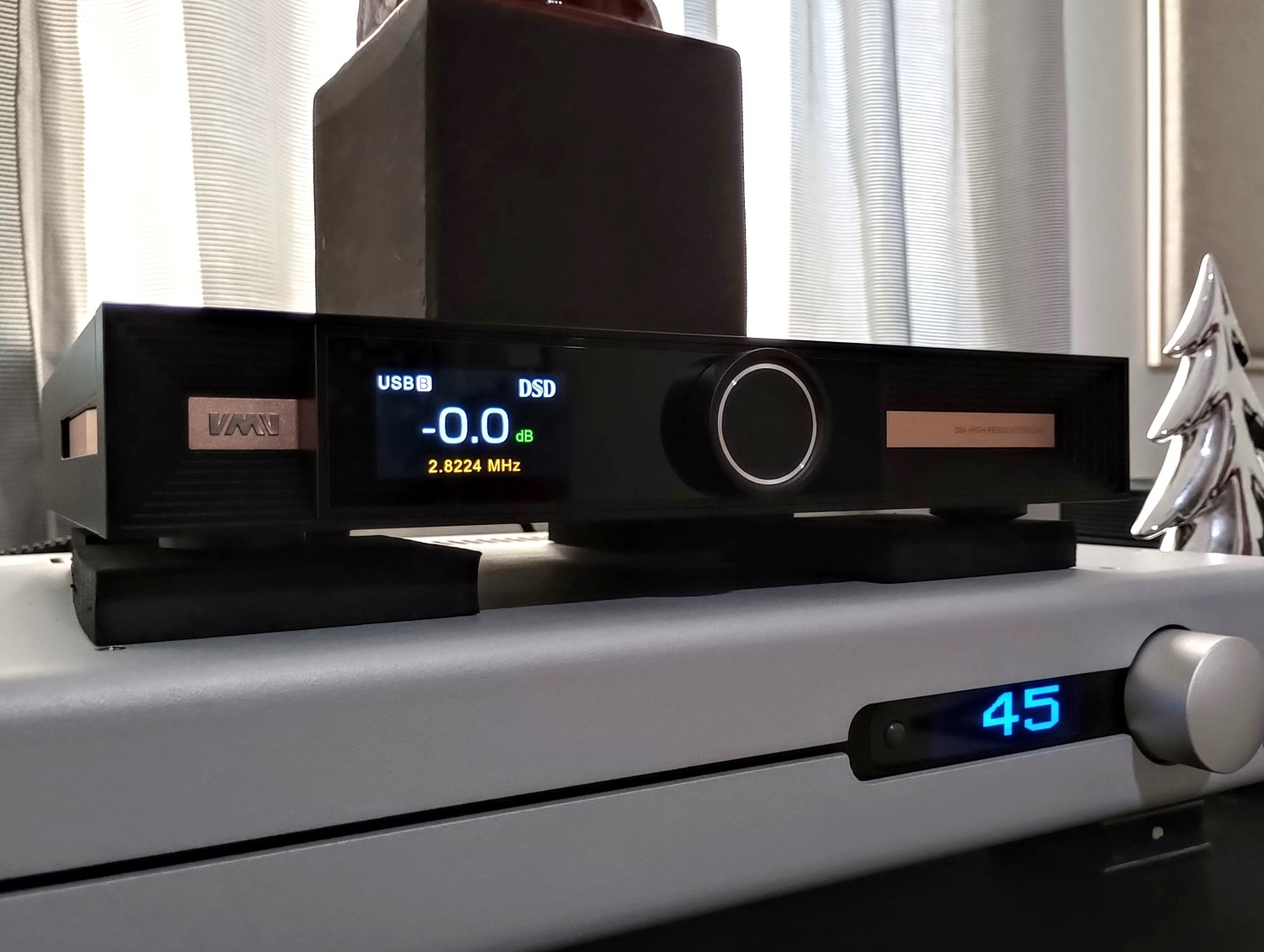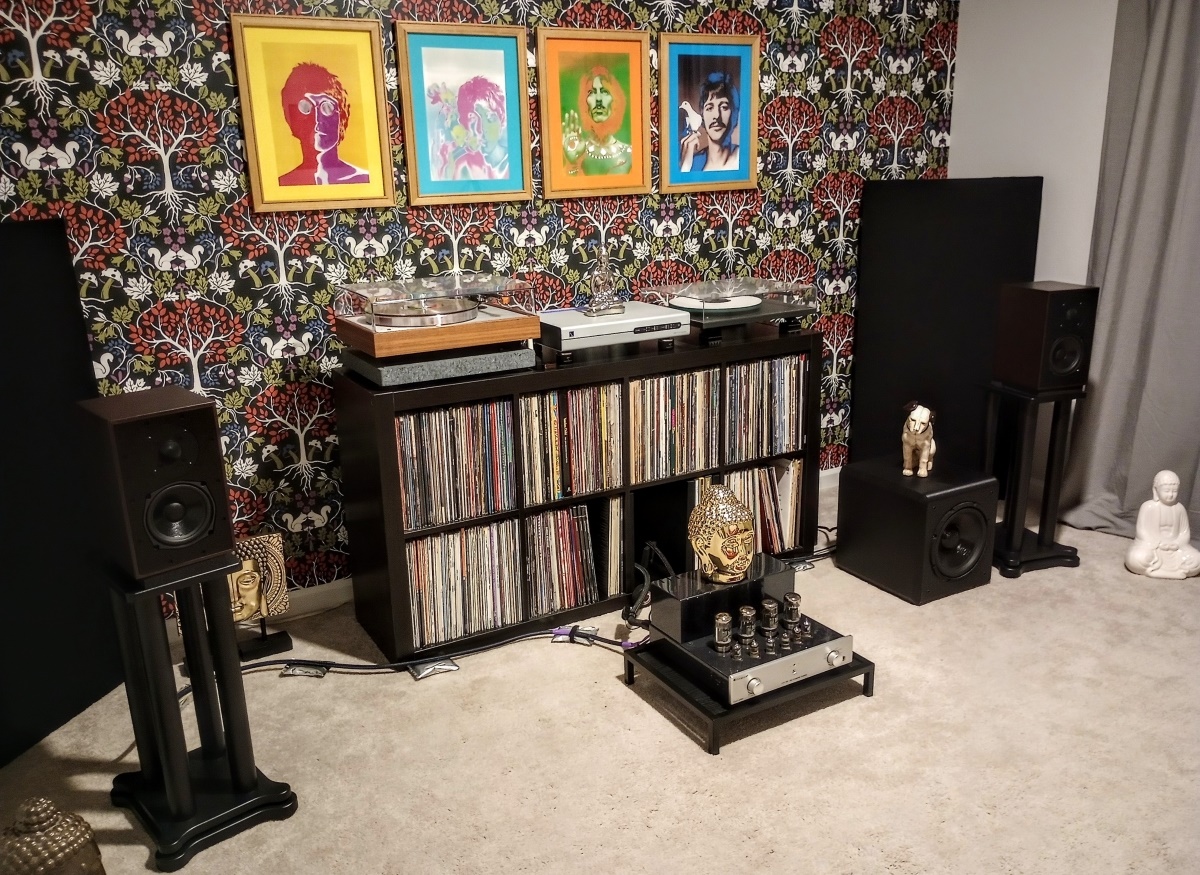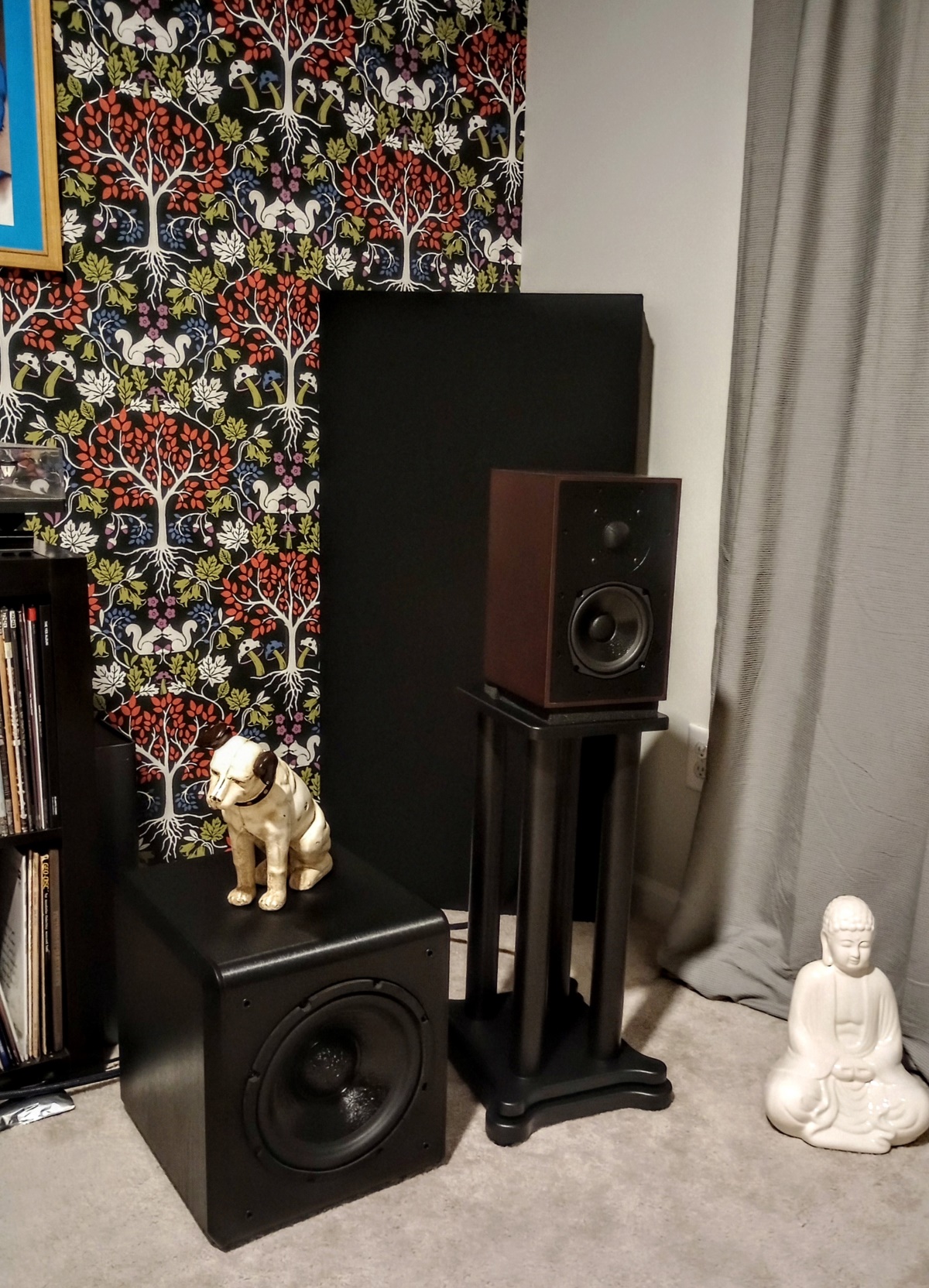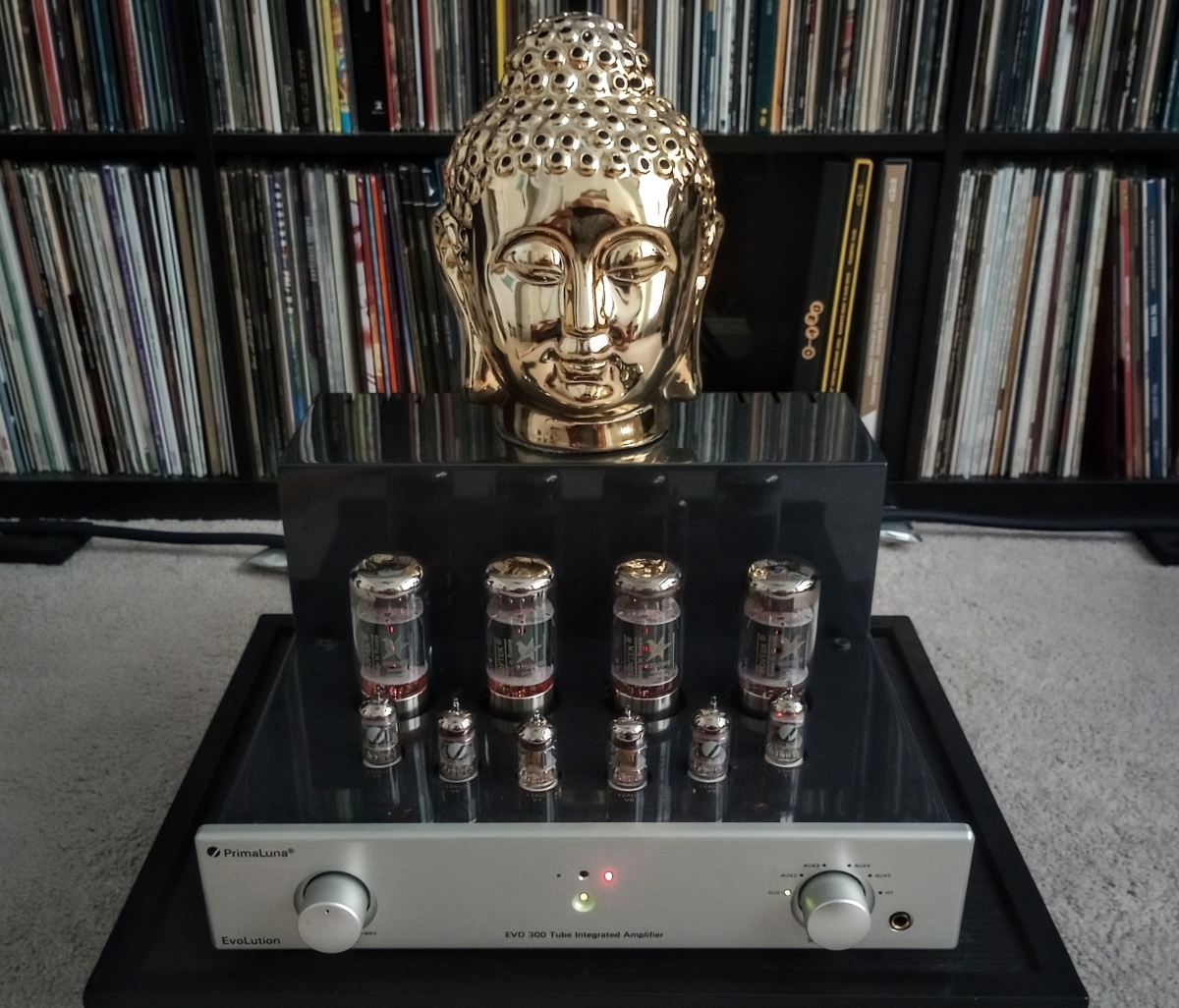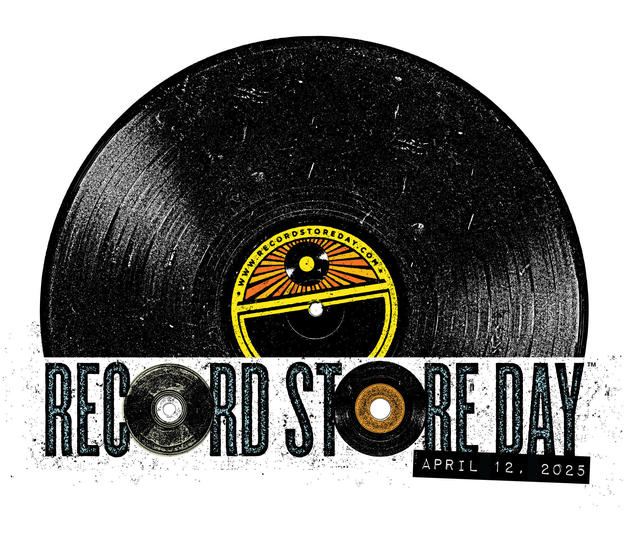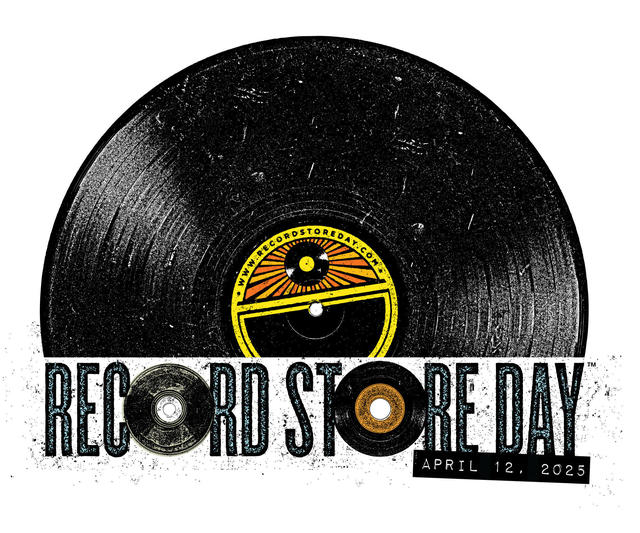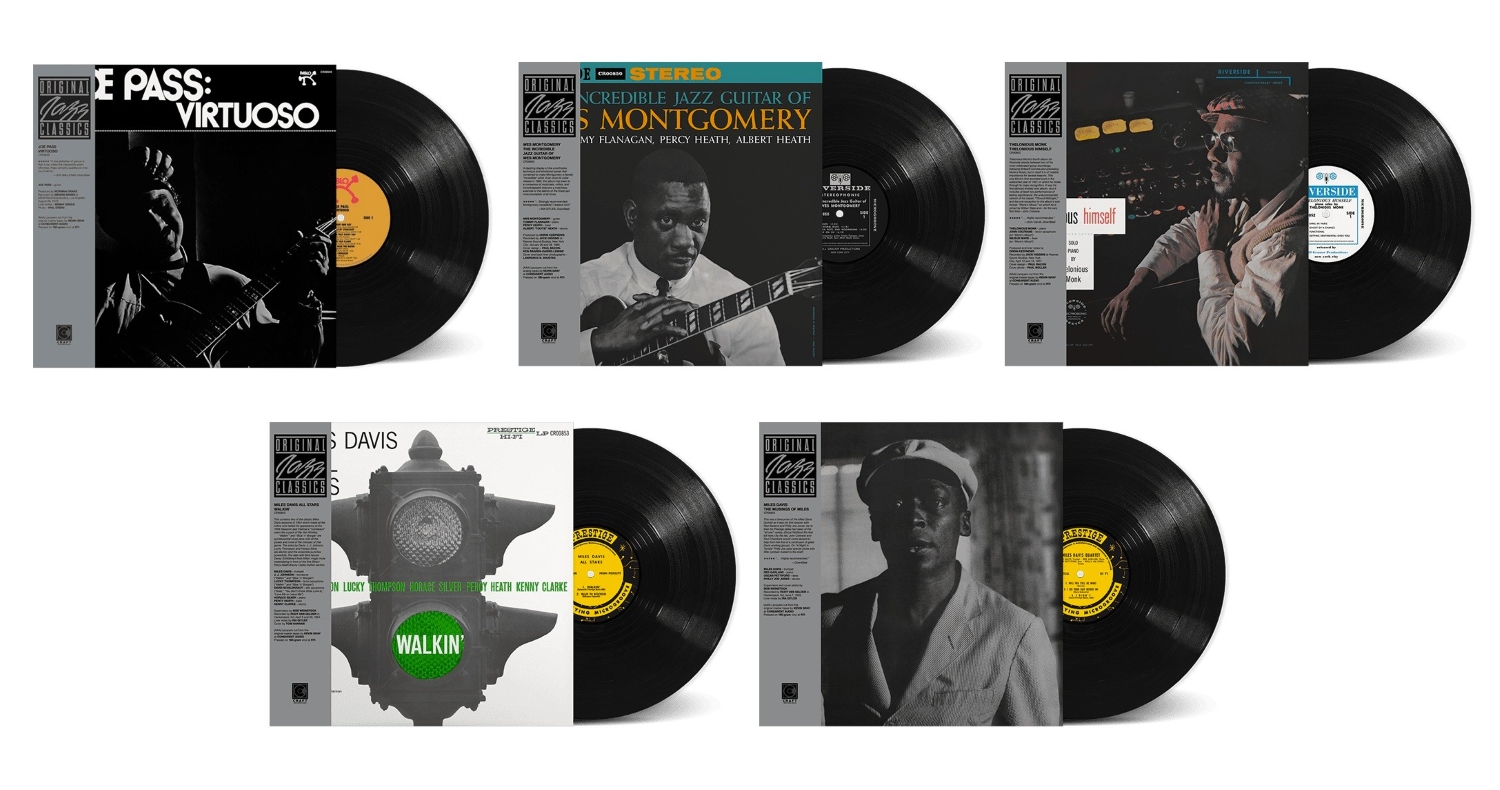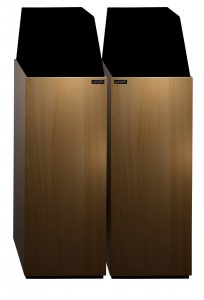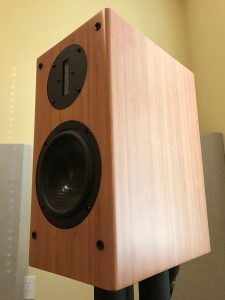I have a fairly long history with Audioengine loudspeakers and products; in my book, they're some of the most well-designed, well-constructed, and best-sounding powered speakers and ancillary products on the market. The level of technology employed in their designs approaches the current state-of-the-art, especially when you consider the ridiculously low MSRPs of many of Audioengine's offerings. The bang-for-your-buck ratio is literally off the charts crazy good! When I reviewed the flagship HD-6 Wireless Powered Speakers a couple of years ago, I was convinced afterwards that if my circumstances dictated it, I could easily live with them as my only music playback source. The $699 MSRP of the HD-6 is less than the price of one of my mono power amps, and their all-inclusive package obviates the need for external amps, a preamp, and includes a very decent built-in DAC. Quite the bargain for well under a grand, and the sound quality is superb, regardless of the input source. After the review period ended, I passed them along to a pair of needy music lovers (at Audioengine's Brady Bargenquast's suggestion), but had the opportunity recently to hear them again. My thoughts on this haven't changed—I still love those speakers, and it'll be really interesting to hear how the significantly less expensive A5+ Wireless Powered Loudspeakers compare.
The A5+ shares many commonalities with the flagship HD6; both speakers share the same amplifier configuration, which ouputs a peak of 75 analog Class A/B watts per side. Audioengine's design model places all the electronics for the speaker pair in the active left unit (including the volume control); the passive right unit is connected via a nice and heavy banana-plugged 12.3-foot custom cable that fits firmly into heavily-plated binding posts. The complement of inputs and outputs is essentially the same, with a 3.5 mm stereo input (perfect for connecting to a DAP or your phone), along with a pair of coaxial stereo inputs and a pair of level-controlled stereo outputs. Which come in handy for adding a sub, if you feel the need (Audioengine sells a nice one!). The driver complement—which all drivers are manufactured by Audioengine to their exacting specifications—is very similar in appearance to that of the HD6. Except that the A5+ employs a five-inch mid-woofer and three-quarter-inch soft dome tweeter, compared to the HD6 5.5-inch mid-woofer and one-inch tweeter. And there are minimal differences between the cabinet sizes and volumes (the A5+ is very slightly smaller); most of the important specifications are, not surprisingly, exactly the same between the two. The signal-to-noise ratio for both is 95dB, with a frequency range of 50Hz - 22kHz, plus or minus 1.5dB at either frequency extreme. The HD6 has magnetic, detachable grills; the A5+ has no grills, but has a very modern and elegant appearance. They also come with a remote that's milled from a block of solid aluminum; it has limited functions (volume, mute), but it's a very nice touch!
The major exception with the A5+ is the absence of an accessible internal DAC (probably the biggest single difference between the two models), so there's also no optical digital connection as on the HD6. The A5+ does include a very high-quality, internal DAC that upsamples the Bluetooth function to 24-bits. But partially because of space considerations with the unit (so much crammed into an already smaller space) and the design aesthetic for the A5+, they opted to forego adding USB and optical port accessibility. While the inclusion of the built-in D-1 DAC ($169 for the standalone unit) definitely makes the HD6 the more versatile of the two, with the availability these days of so many inexpensive DACs out there that are capable of handling just about any file type that exists, it's a good trade-off that keeps the MSRP of the A5+ very reasonable. And that MSRP, which ranges from $499 to $569, is solely variable based on the cabinet finish—you pay an extra $70 for the solid carbonized bamboo exterior, which is truly an elegant option, and worth every penny. My review sample (the $499 version) came in the satin black finish; these are beautifully made speakers, with exceptional fit and finish, and the satin black speakers are pretty elegant in their own right. But if I were buying these babies for myself, I'd definitely spring for the bamboo—it's gorgeous and environmentally green!!
I stand-mounted the A5+ on 28-inch Lovan metal stands and placed them about six feet from the rear wall and about 10 feet apart, slightly toed-in towards the listening position. I know it's probably ludicrous to place a pair of speakers that most likely will be used in the bookshelf position in a bedroom or dorm room (or perhaps a home office) in a large-ish listening room, but I was curious if they'd respond much as the HD6 did at my previous location. I've been playing about with a press subscription to Qobuz for a bit now, and the desktop version that's on my Windows laptop has been playing to the A5+. My laptop incorporates a pair of Solid State Drives, with the main SSD being a Samsung 960 EVO M2, which makes for a completely silent, lightning-quick machine with extremely low latency. The signal from the laptop played through an AudioQuest DragonFly Red DAC, connected with an AudioQuest Big Sur 3.5mm-to-coaxial stereo cable that was attached to the A5+ stereo input. Simultaneously, I had the big system connected to the same laptop, using my tablet with Bubble DS controlling Qobuz internally, so I could flip between systems easily to A/B the results. Most of my listening was to any of the absolute boatload of 24/96 files available on Qobuz (full review forthcoming!); and the DragonFly's color-changing display confirmed that I was indeed listening to high res playback. Even ice-cold, out-of-the-box, the sound quality of the A5+ was pretty incredible with the higher-res files, and only got better as they warmed up and got some hours on them.
After playing about for days with Qobuz through the DragonFly, I switched it up and inserted the remarkably good Fiio Q5 Portable Headphone Amp/DAC, upgraded with their newest AM3B amplifier module (package review forthcoming!). Retailing at around $350 USD, the star feature of this superb unit is its built in DAC, which will handle any PCM file type out there, as well as up to 2x DSD. While the amp module doesn't come into play here, it's a monster, that will drive any standard or balanced headphone to ridiculously musical and satisfying levels. As a unit, it pairs perfectly with my laptop, and for the next set of listening tests, I used JPLAY to stream the contents of my music server via Bubble DS Next and my Android tablet to the A5+. My music server contains about 3000 albums, most of which are uncompressed FLAC rips from my CD collection, but I also have a good cross-section of higher-res PCM and DSD digital files.
Here's the shocker: when feeding these babies a stream of high-res files from a great source through a great DAC, the sound quality was remarkably similar in character to the sound from my home system. One of the great things about my new listening room at my new place is that it was purpose-built, so, while not perfect, it does give a much better impression of what's actually happening in the recording and with the attached equipment. And without any of the buzzes and vibrations from the old place. So I generally feel pretty enthusiastic about the accuracy of what I'm hearing when I'm getting really good sound from a particular recording or the equipment that's playing it. There's no digital trickery going on here; just as with the HD6, the sound quality from the A5+ has been beyond phenomenal with anything I've thrown at them. Yes, they're range restricted, with a bottom that drops significantly below 50Hz, but at no point during the review process did I feel the need to add a sub to the mix. Even in room with a volume of 3700 cubic feet, the level of available bass and ability to tackle complex dynamics displayed by the A5+ just about slayed me with every listening session. And the quality and tonality of the bass that's there is very, very good.
But it's not just about the ability to play loudly and with impressive dynamics. The A5+ projects an impressive and realistic stereo image that's so satisfyingly good, it has me scratching my head that Audioengine can wring so very much in terms of performance from a pair of speakers that retails starting at less than $500. I recently had the excellent Spendor A2's ($2,395 MSRP) inhouse for review, which are British-made floorstanders enlarged and expanded from Spendor's variant of the classic LS3-5A monitor. In my review of the HD6, I alluded that they reminded me very much of that kind of classic stand-mount monitor sound; and my recent experience with the the Spendor A2's totally bears that out. The sound I'm hearing from the A5+, with clear as a bell highs, a very liquid and uncongested midrange, with ample and well defined bass, pretty much mirrored what I was hearing in the Spendors. When fed from a really high quality source, these babies respond with exceptionally musical sound. Which gives me a lot of hope for the future, that most of the millenials that will probably buy these excellent speakers from Audioengine have access to such lovingly made, extremely capable speakers and might actually learn to love their superb musicality.
And when I say "really high quality source", I don't necessarily mean an expensive source. The sound streaming from my laptop through either the AudioQuest DragonFly or the Fiio Q5 was to my ears quite nearly the match for the sound I heard through my Zu Omens from the laptop through the Sonore UltraRendu and PS Audio Gain Cell DAC. Yes, a $200 or $350 DAC in combination with $500 speakers sounded pretty darn great beside a $6000-plus system (which is essentially chump-change in the audiophile world!). The cost of setting up a really good Audioengine-based system is comparable to what the "one-percenters" would pay for a cup of coffee. And the good thing, is that it's really great tasting coffee! There are so very many inexpensive DACs, DAPs and other ancillaries out there that offer superb performance that the new crop of music lovers can get great sound, and definitely on a beer budget.
It would be remiss of me not to evaluate the A5+ wireless capabilities via Bluetooth, and the news here is excellent, as well. The A5+ has the latest generation of Bluetooth technology (Bluetooth 4.0), with support for aptX HD, aptX, AAC and SBC, so that should cover just about any wireless device (whether Android or IOS) that you need to stream from. And with an operational range of about 100 feet. However, the real star of the show here is aptX HD, which allows for 24-bit upsampling and playback, with very low latency, and for the first time allows for better than CD quality playback via Bluetooth. I have two devices that are aptX HD equipped, the Fiio Q5 and my Huawei Android phone, and I can honestly report that the results are sooooo much better than I expected.
I'm pretty sure that my pair of HD6's from late 2015 didn't include the aptX HD technology, and even if they did, I didn't have a compatible streaming device on hand that would allow me to hear the difference. That was one of my biggest gripes with regard the the HD6; that I really felt the sound quality came up significantly short when played via Bluetooth. I no longer feel that's the case with the A5+ speakers. Whether playing files from my music server via J River Media Center's Gizmo app, or streaming Qobuz or Tidal via their apps on my Huawei smartphone, the sound was surprisingly very, very good. In fact, when listening for prolonged sessions or late at night, I often had to double check to confirm whether I was indeed listening via Bluetooth or a direct connection.
I rarely listen to music as background noise; when I listen, I tend to listen critically, and at reference levels. Having a wife and all that, what that translates into is that we don't crank the Sabbath for prolonged periods during normal household hours. Wife leaves to run an errand or for an appointment: run downstairs and crank some ridiculously loud music! Fortunately, a goodly portion of my musical likes run in the direction of not-shaking-the-walls-and-windows at reference volume levels, which keeps most everyone who happens to be at the house mostly happy. So I'll go out on a limb and say it again—if I were to find myself in the situation where I was forced to sell off all my equipment and only keep the barest semblance of a system, I could happily live with a pair of Audioengine A5+. Are they absolutely perfect? No. Do my "golden ears" believe the sound via Bluetooth matches that of true hi-res? Not quite yet. Do they do enough things right to warrant keeping them around for the long haul? Absolutely! I swear to you, I don't know what kind of special sauce they're basting these babies with, but Audioengine is definitely the industry leader in powered speakers, especially from the all-important aspects of sound quality and musicality. Very highly recommended.
A5+ Wireless Powered Loudspeakers
Retail: $499-$569 (depending on cabinet finish)
Audioengine
All images courtesy of Audioengine




